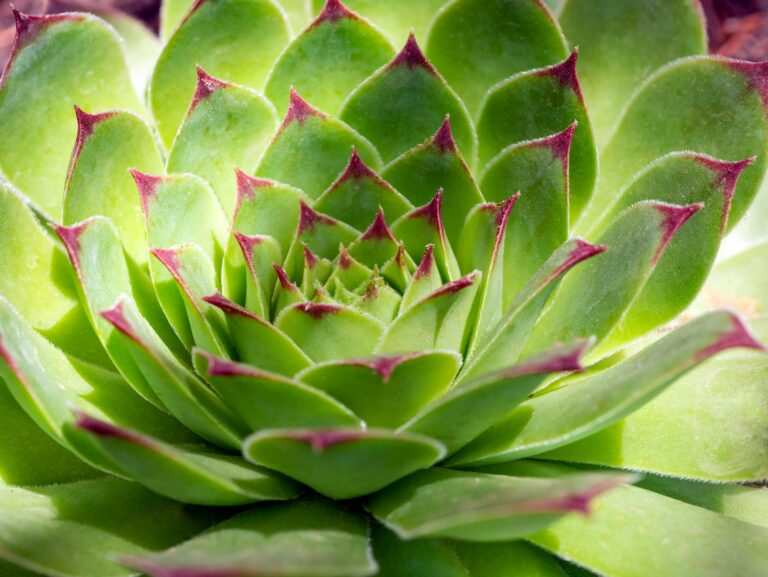Do you have a problem killing a few of your indoor plants? To avoid killing a plant, you have to know how to care for it, such as how to care for a crispy wave fern plant.
Crispy wave fern, scientifically known as Asplenium nidus, is a popular indoor plant admired for its attractive foliage and ease of care. This tropical plant is known for its broad, wavy fronds that have a shiny appearance. It is known for being native to tropical regions of the world.
The crispy wave fern is aesthetically pleasing and helps purify the air, making it an excellent addition to any room.
Caring for a crispy wave fern can be challenging because it requires attention to specific details such as lighting, watering, soil, and humidity. The proper care ensures that the fern remains healthy, vibrant, and retains its beautiful, crisp appearance. The fern is sensitive to its environment and requires adequate attention to thrive. Understanding the plant’s needs is crucial to ensure it thrives in your home or office.
We will discuss in detail how to care for a crispy wave fern, from the type of soil it requires to the amount of water and light it needs. So, whether you are a seasoned plant enthusiast or a beginner, this guide will help you know how to care for your plant and help it thrives.
Simple tips to care for a crispy wave fern.
Most people think that indoor plants can grow using the same conditions. Even though this might be true for some plants, such as succulents, for others, you have to know the detailed care for each plant.
Here are the tips for caring for a crispy wave fern.
Soil.
The best soil for a crispy wave fern is a well-draining mixture rich in organic matter. The soil should be loose and light, allowing air to flow through the roots and preventing water from accumulating in the soil, which can lead to root rot.
You can make a good soil mix for a crispy wave fern by combining equal parts of peat moss, perlite, and vermiculite. This mixture balances drainage, aeration, and moisture retention, which are essential for the plant’s growth.
Using the right soil mix is essential in caring for a crispy wave fern by providing a stable foundation for the plant’s roots to grow and take up nutrients. Also, the right soil mix will help regulate moisture levels, ensuring the plant receives adequate water without the risk of overwatering.
When planting a crispy wave fern, it’s essential to ensure that the soil is moist but not soggy. Once the plant is established, ensure the soil is kept consistently moist but not saturated, and avoid letting the soil dry out completely.
Lighting.
Lighting is crucial in caring for a crispy wave fern as it affects the plant’s growth, development, and overall health. As a tropical plant, the crispy wave fern requires bright, indirect light to thrive.
When placing your crispy wave fern, avoid exposure to direct sunlight since this can burn the plant’s leaves. At the same time, placing it in an area with insufficient light can cause the leaves to turn yellow and fall off.
Ideally, place the crispy wave fern near a bright, filtered window where it can receive adequate indirect sunlight. If this is impossible, you can supplement the plant’s lighting with artificial lights such as fluorescent or LED grow lights. These lights should be placed approximately 12-18 inches away from the plant and kept on for 10-12 hours a day.
Ensure that you rotate the plant occasionally to ensure that all parts of the plant receive adequate light, as the leaves can grow towards the light source, leading to an uneven plant shape.
Watering.
To care for crispy wave fern plant, you have to properly give it water to ensure its moisture levels are consistent. However, you must know how to properly water it to avoid overwatering, which can lead to root rot, a plant problem.
The best way to water a crispy wave fern is to ensure the soil is moist but not soggy. Water the plant thoroughly, allowing the water to soak through the soil and drain out of the pot’s bottom. Ensure that the plant’s pot has drainage holes to prevent water from accumulating in the soil.
When watering, ensure that you only water on the soil around the plant and avoid watering the plant’s foliage. Water on foliage can lead to fungal growth and damage leaves.
The frequency of watering a crispy wave fern depends on factors such as the plant’s size, the pot’s size, and environmental conditions. Generally, the plant should be watered when the top inch of the soil feels dry to the touch.
Alternatively, You can increase humidity by misting the plant’s leaves with water or placing a tray of water near the plant. This is especially important during dry winter or when the plant is near an air conditioning or heating unit.
Substrate.
A substrate can be a potting mix made at home or purchased from the store. A high-quality substrate can provide a stable foundation for the plant’s roots, promote good drainage, and retain moisture, all essential for the plant’s growth and development.
A good substrate for a crispy wave fern plant should be well-draining and rich in organic matter. The mix should be loose and light, allowing air to flow through the roots while retaining moisture.
The substrate’s quality can impact the plant’s health and make it more resistant to pests and diseases. A too-dense or heavy substrate can lead to waterlogged roots, which can cause root rot, while a too-loose substrate may dry out too quickly, leading to wilting and stunted growth.
A high-quality substrate ensures the plant’s roots can access adequate oxygen, nutrients, and water. It also helps prevent soil compaction, which can restrict the roots’ growth.
When potting a crispy wave fern plant, use a substrate appropriate for the plant’s needs. Also, you should re-pot the plant every 1-2 years with a fresh substrate to help maintain the plant’s health and promote healthy growth.
Temperature and Humidity.
The crispy wave fern thrives in warm and humid environments as a tropical plant.
The ideal temperature range for a crispy wave fern is between 60-75°F (15-24°C). These plants are sensitive to temperature fluctuations, and exposure to temperatures outside this range can cause stress and damage to the plant.
It’s essential to avoid placing the plant near drafty areas or air conditioning units, which can cause sudden temperature drops. Similarly, exposure to extreme heat can cause the plant’s leaves to dry out and become scorched.
Crispy wave fern plants thrive in high-humidity environments, with ideal humidity levels between 50-80%. The plant’s leaves can become crispy, brown, and withered when the air is too dry.
There are several ways to increase humidity levels for a crispy wave fern plant. One method is to regularly mist the plant’s leaves with water, which helps to increase the humidity around the plant. Placing the plant on a pebble tray filled with water can also help increase humidity levels.
Another option is to use a humidifier near the plant, which can provide consistent humidity levels. It’s also helpful to avoid placing the plant near air conditioning or heating units, which can decrease humidity levels.
How to propagate crispy wave fern.
There are two different ways that you can propagate crispy wave fern plants; Division or spores.
Division.
Propagation by division involves separating the plant into smaller sections, each with its roots and foliage. This method is best done during the plant’s active growing season, typically in the spring or summer.
To propagate a crispy wave fern through division, gently remove the plant from its pot and separate it into smaller sections, each with its root system and foliage. Make sure that each section has enough roots to support itself.
Repot each section into well-draining soil and water thoroughly. Keep the plant in a warm, humid location with bright, indirect light, and avoid direct sunlight.
Spores:
Propagation by spores involves collecting and sowing spores produced by the plant. This method requires more time and patience, but it can be rewarding to propagate the plant.
To propagate a crispy wave fern by spores, you need to collect the spores from the underside of the plant’s fronds. Once collected, place the spores on a moist substrate in a warm, humid location with bright, indirect light.
Cover the spores with plastic to maintain a high humidity level and water the substrate as needed to keep it moist. After several weeks, the spores should begin germinating, and small plants will appear.
Once the plants have grown large enough, transplant them into individual pots with well-draining substrate and care for them as you would mature plants.
If you are thinking about propagating, you can use either of these methods, since they can be successful with proper care of crispy wave fern plants.
Conclusion.
In conclusion, caring for a crispy wave fern plant requires attention to several essential factors, such as soil, lighting, watering, substrate, temperature, and humidity. Providing the plant with well-draining soil, bright, indirect light, and consistent moisture levels can promote healthy growth and prevent stress and damage to the plant’s foliage.
By following the guidelines discussed in this topic, you can enjoy a thriving and healthy crispy wave fern plant that adds beauty and elegance to any indoor space.




